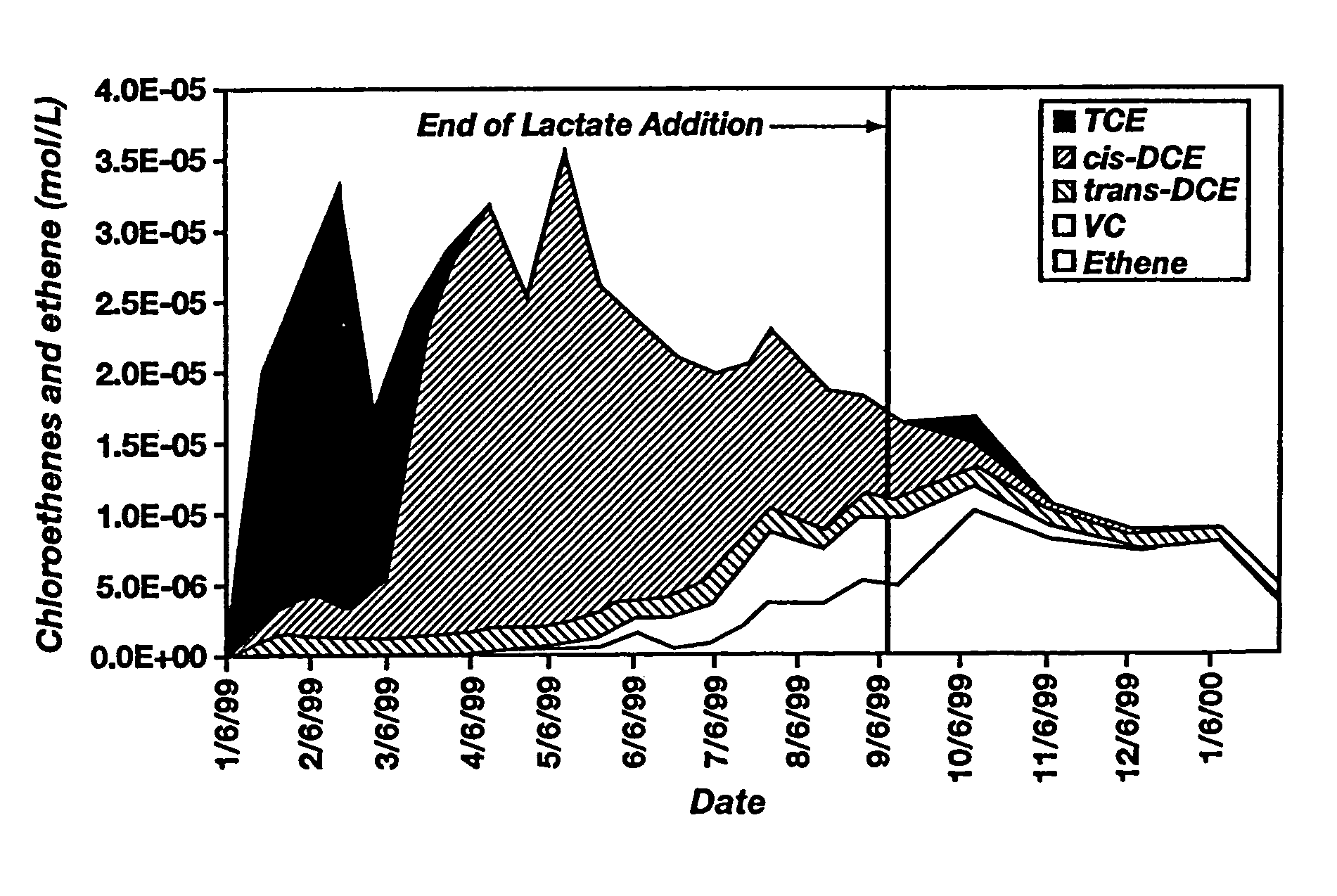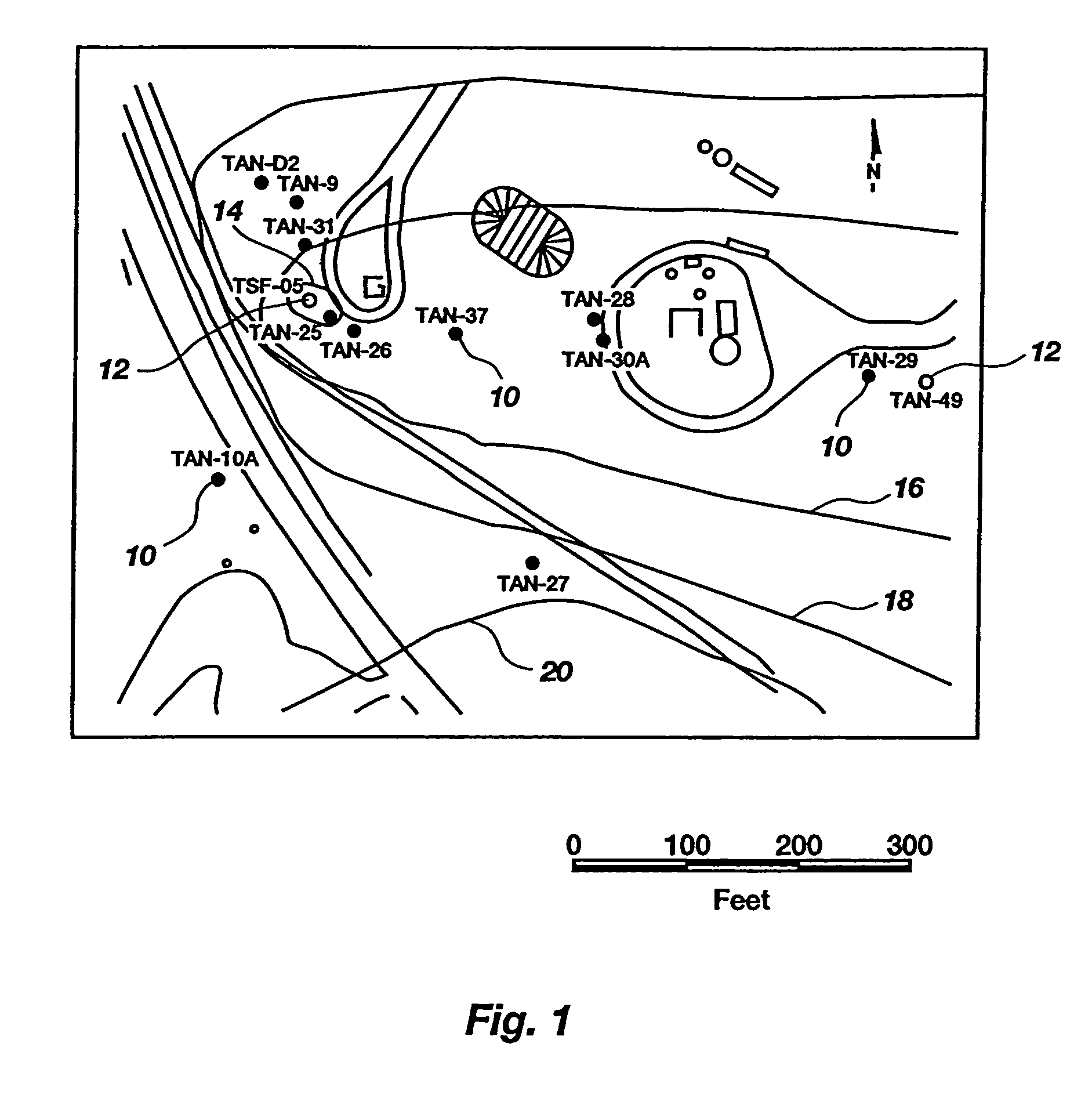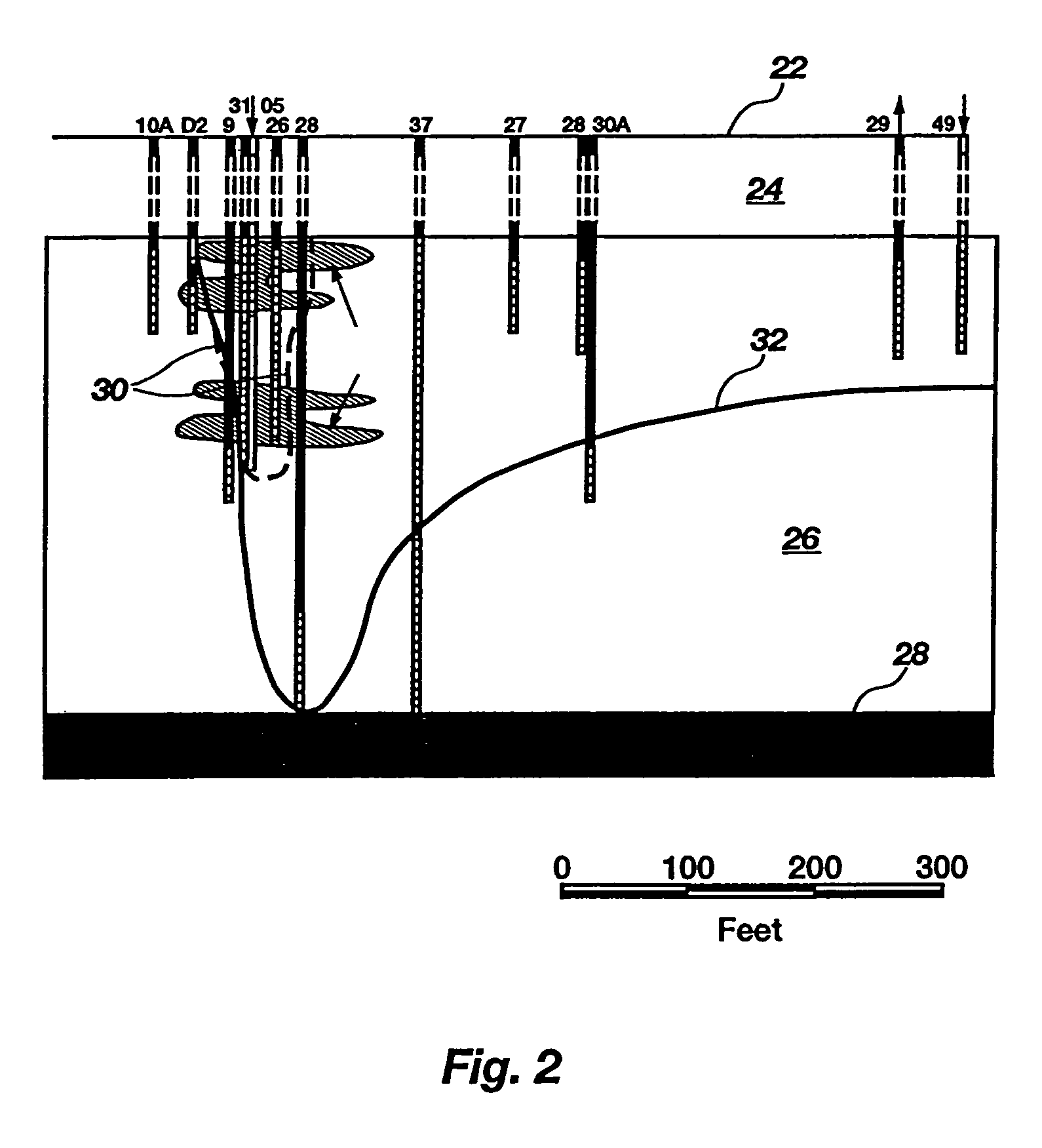Halogenated solvent remediation
a technology of halogenated solvents and solvents, applied in the field of environmental pollution remediation, can solve the problems of infiltration of groundwater supplies, contaminated areas containing relatively high concentrations of contaminants, and little care in the handling of organic solvents and other materials used in industry and at government installations, and achieve the effects of enhancing in situ bioremediation, enhancing mass transfer of nonaqueous halogenated solvents, and enhancing bioremediation
- Summary
- Abstract
- Description
- Claims
- Application Information
AI Technical Summary
Benefits of technology
Problems solved by technology
Method used
Image
Examples
example 1
[0073]A 1-year field evaluation of enhanced in situ bioremediation was performed at Test Area North (“TAN”) of the Idaho National Engineering and Environmental Laboratory. FIG. 1 shows a site plan of TAN, wherein solid symbols represent monitoring wells (10) and open symbols represent injection wells (12). The locations of a 5,000 μg / L TCE isopleth (14); 1,000 μg / L TCE isopleth (16); 100 μg / L TCE isopleth (18); and 5 μg / L TCE isopleth (20) are shown by solid lines. FIG. 2 illustrates a cross section of this site, showing the surface of the ground (22), an approximately 63-m (210-feet) fractured basalt unsaturation zone (24) (not drawn to scale), an approximately 60-m (200-feet) fractured basalt aquifer (26), and an impermeable clay interbed (28). The approximate location of the TCE secondary source (30) and the 1,000 μg / L TCE isopleth (32) are also indicated. The test was performed to determine whether this technology has the potential to enhance or replace the default pump-and-trea...
example 2
[0085]Based on the field results presented in Example 1, laboratory studies were performed to confirm that the enhanced bioavailability of TCE observed in the field was due to co-solvent or surfactant behavior resulting from the use of high concentrations of sodium lactate. Two fundamental properties used to screen the co-solvent or surfactant properties of a solution are surface tension and interfacial tension. Surface tension measures the force per unit length along the interface between a liquid and air due to its tension. When a co-solvent or surfactant is present in an aqueous liquid at increasing concentrations, the surface tension of that liquid decreases. Interfacial tension is similar to surface tension except that it measures the force per unit length along the interface between two liquid phases arising from the surface free energy. The higher the interfacial tension between two liquids, the less likely one is to dissolve into the other, and the more difficult it is for o...
example 3
[0091]Site Background. A site-wide Remedial Investigation (RI) identified a chlorinated solvent plume in a sandy aquifer approximately 35 to 60 feet (10.7 to 18.3 m) below ground surface at the 164th Airlift Wing at the Tennessee Air National Guard Site, Memphis, Tenn. The plume area targeted for treatment was over 2 acres (0.81 hectares). This unconfined saturated interval is overlain by an inorganic loess vadose zone and is separated from the deeper regional aquifer by a clay unit. PCE concentrations ranged from 5 to 1,000 μg / L in the target area, while TCE ranged from 100 to greater than 15,000 μg / L in the injection / monitoring wells. The aquifer initially exhibited conditions ranging from aerobic to mildly reducing. A pilot test of a sodium lactate injection system to enhance natural reductive dechlorination in the groundwater was approved by the Tennessee Department of Environment and Conservation, the Memphis and Shelby County Health Department, and the Shelby County Ground Wat...
PUM
| Property | Measurement | Unit |
|---|---|---|
| diameter | aaaaa | aaaaa |
| diameter | aaaaa | aaaaa |
| thick | aaaaa | aaaaa |
Abstract
Description
Claims
Application Information
 Login to View More
Login to View More - R&D
- Intellectual Property
- Life Sciences
- Materials
- Tech Scout
- Unparalleled Data Quality
- Higher Quality Content
- 60% Fewer Hallucinations
Browse by: Latest US Patents, China's latest patents, Technical Efficacy Thesaurus, Application Domain, Technology Topic, Popular Technical Reports.
© 2025 PatSnap. All rights reserved.Legal|Privacy policy|Modern Slavery Act Transparency Statement|Sitemap|About US| Contact US: help@patsnap.com



